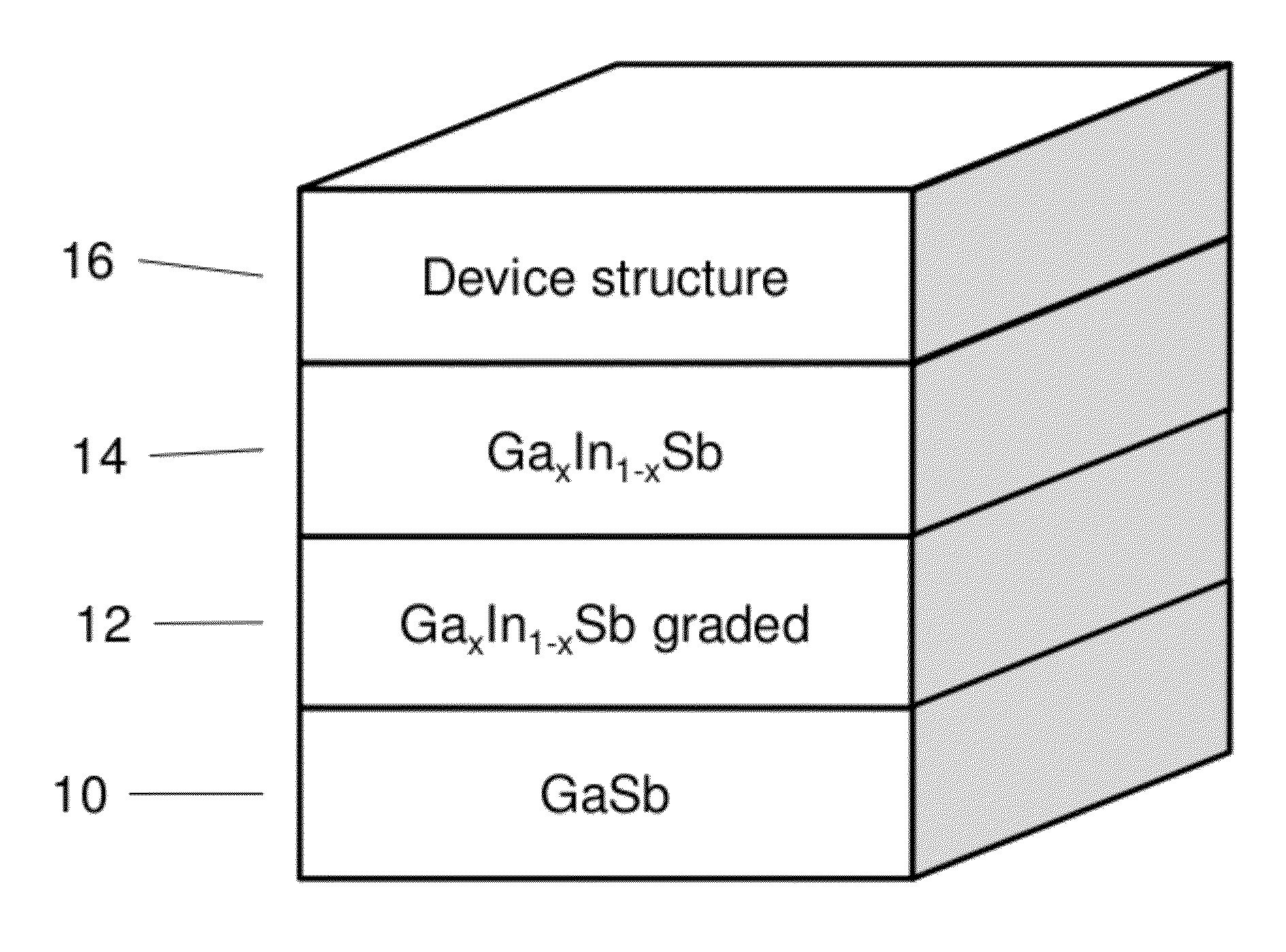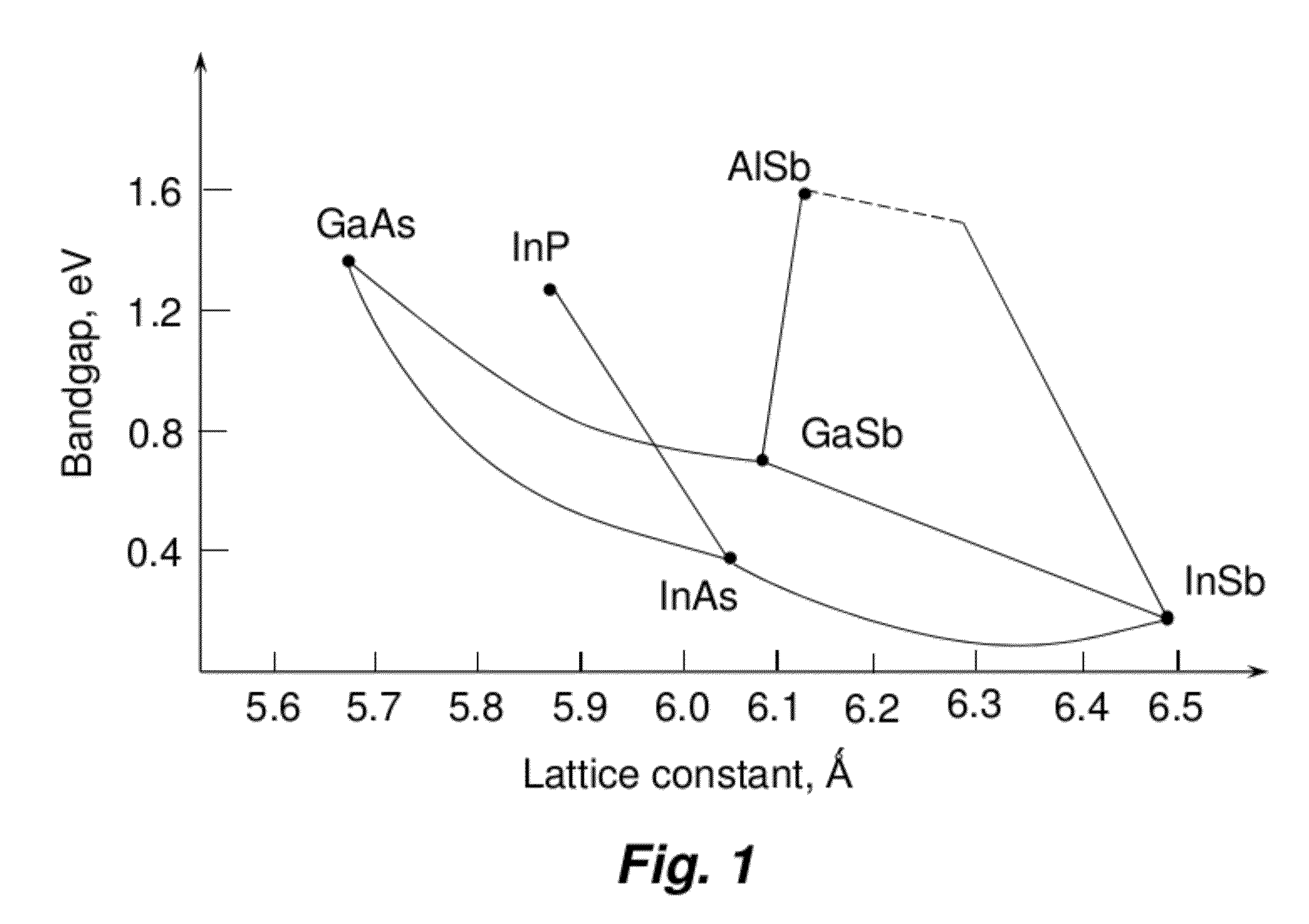Compound Semiconductor Device on Virtual Substrate
a semiconductor and virtual substrate technology, applied in the field of semiconductor/solid-state device manufacturing, semiconductor/solid-state device layout, semiconductor devices, etc., can solve the problems of high defect density, mechanical strain in epitaxial film, and mismatch between substrates
- Summary
- Abstract
- Description
- Claims
- Application Information
AI Technical Summary
Benefits of technology
Problems solved by technology
Method used
Image
Examples
Embodiment Construction
[0037]FIG. 1 presents the diagram showing the bandgaps of the narrow-band III-V compounds and their respective lattice constants. The lowest possible bandgap and largest associated wavelength are achieved for the compounds with the lattice constants around 6.3 Angstrom, which has no matching binary point. At the same time, the use of GaAs as a substrate, as in the Prior Art, is definitely not optimal due to much larger lattice mismatch than, for example, for GaSb and InSb.
[0038]FIG. 2 illustrates one of the semiconductor device structures according to the present invention. The device structure is optimized for the active layer having the lattice constant between approximately 6.1 and 6.3 Angstrom. According to the teaching of the present invention, this can be achieved by obtaining, for example, bulk GaSb substrate 10 (commercially available in qualities suitable for the epitaxial growth); growing on its surface by means of MBE or MOVPE the graded transitional layer 12 of GaInAsSb ...
PUM
 Login to View More
Login to View More Abstract
Description
Claims
Application Information
 Login to View More
Login to View More - R&D
- Intellectual Property
- Life Sciences
- Materials
- Tech Scout
- Unparalleled Data Quality
- Higher Quality Content
- 60% Fewer Hallucinations
Browse by: Latest US Patents, China's latest patents, Technical Efficacy Thesaurus, Application Domain, Technology Topic, Popular Technical Reports.
© 2025 PatSnap. All rights reserved.Legal|Privacy policy|Modern Slavery Act Transparency Statement|Sitemap|About US| Contact US: help@patsnap.com



